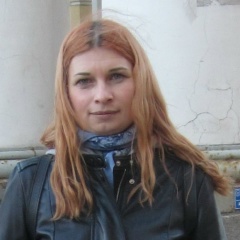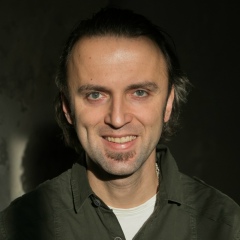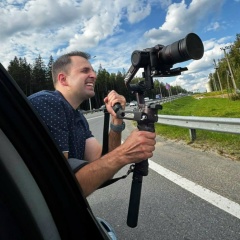О двух календарях, о старом новом годе, и о том, почему четырехсотлетие освобождения Москвы от поляков нужно было отмечать 1 ноября 2012 года, и о том, что же страна празднует сегодня.
История получилась длинной и с продолжением в комментариях, но все же надеюсь, что тем, кто ее осилит, информация покажется полезной.
#астрономия #календарь #история #путин #церковь #рпц #деньнародногоединства #москва
Сначала немного астрономии - науки, позволяющей нам считать время и строить календари. Что такое Время и почему оно идет только вперед, наука пока объяснить не может, но существование именно такого Времени - наблюдаемый факт. А раз так, встает естественный вопрос о измерении Времени. Измеряют его точно также, как и расстояние - берется что-то за эталон и измеряемые промежутки сравниваются с ним. В качестве эталона тут может выступать любой природный периодический процесс, с постоянным периодом. С древности человечеству известно два таких - сутки (цикличность дня и ночи) и год (цикличность сезонов погоды) - которые и легли в основу измерения времени и календарей всех народов мира.
Как известно, смена дня и ночи бывает из-за того, что Земля вращается вокруг своей оси, подставляя Солнцу то один бок, то другой. Смена времен года бывает из-за того, что Земля обращается вокруг Солнца, а ось суточного вращения Земли не перпендикулярна плоскости обращения вокруг Солнца. Именно в результате последнего обстоятельства (а не эллиптичности орбиты, которое вносит лишь небольшие коррективы в погоду) бывает лето и зима - направление наклоненной оси вращения Земли сохраняется, и Земля подставляет Солнцу то один полюс, то другой.
Сколько же суток в году? Для измерения длины года в сутках не нужно понимания того, что Земля вращается вокруг Солнца - в древности Землю считали центром мира. Достаточно отметить, что летом Солнце в полдень поднимается высоко, дни длинные, а ночи короткие, а зимой - Солнце низко, дни короткие, а ночи длинные. Получается, два раза в год есть дни когда день равен ночи - они называются равноденствиями.
Если смотреть со стороны далеких звезд, Земля в течение одного оборота оказывается с разных сторон от Солнца. С Земли это наблюдается как изменение положения Солнца среди звезд. Этот видимый путь Солнца называется эклиптикой. Точки пересечения эклиптики с экватором - плоскостью, перпендикулярной оси вращения Земли - и есть точки равноденствия. Действительно, именно когда Солнце находится близко к экватору, день примерно равен ночи. Промежуток времени между двумя прохождениями Солнца через точку весеннего равноденствия и считается годом. Вычисление положения Солнца среди звезд позволяет определить длину года в сутках с большой точностью, и точность эта увеличивалась по мере развития инструментов.
К началу 1-го века было подсчитано, что год равен примерно 365.25 суток. Увы это число сильно не целое - именно поэтому, для того, чтобы год начинался всегда в полночь, приходятся делать года с разным количеством дней. В 45 году нашей эры Юлий Цезарь ввел предложенный группой астрономов календарь, в котором присутствует четырехлетний цикл - из трех по 365 дней в каждом и одного високосного года в 366 дней - в среднем за четыре года получается как раз 365.25 суток в году. Этот календарь получил название Юлианский.
И все было бы хорошо, если бы не оказалось, что сутки в году на самом деле умещаются 365.2422 раз. Собственно, эта погрешность бы не очень страшна, если бы не проблема с христианскими праздниками. Дело в том, что Рождество имеет фиксированную дату - 25 декабря, а Пасха отсчитывается как первое воскресенье после первого полнолуния после весеннего равноденствия. И за счет разницы в одну сотую часть суток между календарем и реальностью, день весеннего равноденствия стал наступать на один день раньше каждые сто лет.
История получилась длинной и с продолжением в комментариях, но все же надеюсь, что тем, кто ее осилит, информация покажется полезной.
#астрономия #календарь #история #путин #церковь #рпц #деньнародногоединства #москва
Сначала немного астрономии - науки, позволяющей нам считать время и строить календари. Что такое Время и почему оно идет только вперед, наука пока объяснить не может, но существование именно такого Времени - наблюдаемый факт. А раз так, встает естественный вопрос о измерении Времени. Измеряют его точно также, как и расстояние - берется что-то за эталон и измеряемые промежутки сравниваются с ним. В качестве эталона тут может выступать любой природный периодический процесс, с постоянным периодом. С древности человечеству известно два таких - сутки (цикличность дня и ночи) и год (цикличность сезонов погоды) - которые и легли в основу измерения времени и календарей всех народов мира.
Как известно, смена дня и ночи бывает из-за того, что Земля вращается вокруг своей оси, подставляя Солнцу то один бок, то другой. Смена времен года бывает из-за того, что Земля обращается вокруг Солнца, а ось суточного вращения Земли не перпендикулярна плоскости обращения вокруг Солнца. Именно в результате последнего обстоятельства (а не эллиптичности орбиты, которое вносит лишь небольшие коррективы в погоду) бывает лето и зима - направление наклоненной оси вращения Земли сохраняется, и Земля подставляет Солнцу то один полюс, то другой.
Сколько же суток в году? Для измерения длины года в сутках не нужно понимания того, что Земля вращается вокруг Солнца - в древности Землю считали центром мира. Достаточно отметить, что летом Солнце в полдень поднимается высоко, дни длинные, а ночи короткие, а зимой - Солнце низко, дни короткие, а ночи длинные. Получается, два раза в год есть дни когда день равен ночи - они называются равноденствиями.
Если смотреть со стороны далеких звезд, Земля в течение одного оборота оказывается с разных сторон от Солнца. С Земли это наблюдается как изменение положения Солнца среди звезд. Этот видимый путь Солнца называется эклиптикой. Точки пересечения эклиптики с экватором - плоскостью, перпендикулярной оси вращения Земли - и есть точки равноденствия. Действительно, именно когда Солнце находится близко к экватору, день примерно равен ночи. Промежуток времени между двумя прохождениями Солнца через точку весеннего равноденствия и считается годом. Вычисление положения Солнца среди звезд позволяет определить длину года в сутках с большой точностью, и точность эта увеличивалась по мере развития инструментов.
К началу 1-го века было подсчитано, что год равен примерно 365.25 суток. Увы это число сильно не целое - именно поэтому, для того, чтобы год начинался всегда в полночь, приходятся делать года с разным количеством дней. В 45 году нашей эры Юлий Цезарь ввел предложенный группой астрономов календарь, в котором присутствует четырехлетний цикл - из трех по 365 дней в каждом и одного високосного года в 366 дней - в среднем за четыре года получается как раз 365.25 суток в году. Этот календарь получил название Юлианский.
И все было бы хорошо, если бы не оказалось, что сутки в году на самом деле умещаются 365.2422 раз. Собственно, эта погрешность бы не очень страшна, если бы не проблема с христианскими праздниками. Дело в том, что Рождество имеет фиксированную дату - 25 декабря, а Пасха отсчитывается как первое воскресенье после первого полнолуния после весеннего равноденствия. И за счет разницы в одну сотую часть суток между календарем и реальностью, день весеннего равноденствия стал наступать на один день раньше каждые сто лет.
About two calendars, about the old new year, and why the centennial of Moscow’s liberation from the Poles was to be celebrated on November 1, 2012, and what the country is celebrating today.
The story turned out to be long and continued in the comments, but I still hope that those who master it will find the information useful.
# astronomy # calendar # history # Putin # church #RPC # dennarodnichestvo #moscow
First, a little astronomy - a science that allows us to count time and build calendars. What Time is and why it only goes forward, science cannot yet explain, but the existence of just such a Time is an observable fact. And if so, the natural question arises of measuring Time. They measure it in the same way as the distance - something is taken as a standard and the measured intervals are compared with it. Any natural periodic process with a constant period can serve as a reference here. Since ancient times, mankind has known two of these - day (cyclical day and night) and year (cyclical weather seasons) - which formed the basis for measuring time and calendars of all peoples of the world.
As you know, the change of day and night is due to the fact that the Earth rotates on its axis, exposing the Sun to one side, then the other. The change of seasons is due to the fact that the Earth revolves around the Sun, and the axis of the Earth's daily rotation is not perpendicular to the plane of revolution around the Sun. It is as a result of the latter circumstance (and not the ellipticity of the orbit, which introduces only small adjustments in the weather) that summer and winter happen - the direction of the inclined axis of rotation of the Earth is preserved, and the Earth exposes the Sun to one pole or the other.
How many days a year? To measure the length of the year in days, it is not necessary to understand that the Earth revolves around the Sun - in ancient times the Earth was considered the center of the world. It is enough to note that in the summer the sun rises high at noon, the days are long and the nights are short, and in the winter the sun is low, the days are short and the nights are long. It turns out that twice a year there are days when day is equal to night - they are called the equinoxes.
Seen from the side of distant stars, the Earth within one revolution is on different sides of the Sun. From Earth, this is observed as a change in the position of the Sun among the stars. This visible path of the sun is called the ecliptic. The intersection points of the ecliptic with the equator - a plane perpendicular to the axis of rotation of the Earth - are the equinoxes. Indeed, it is when the Sun is close to the equator that day is approximately equal to night. The time interval between two passage of the Sun through the vernal equinox is considered a year. Calculation of the position of the Sun among the stars allows us to determine the length of the year in days with great accuracy, and this accuracy increased with the development of tools.
By the beginning of the 1st century, it was estimated that the year is approximately 365.25 days. Alas, this number is not very integer - that is why, in order to always start the year at midnight, you have to make years with a different number of days. In 45 AD, Julius Caesar introduced a calendar proposed by a group of astronomers in which there is a four-year cycle - from three to 365 days each and one leap year to 366 days - an average of just 365.25 days a year for four years. This calendar is called Julian.
And everything would be fine if it had not turned out that the day in a year actually fits 365.2422 times. Actually, this error would not be very scary if it were not for the problem with Christian holidays. The fact is that Christmas has a fixed date - December 25, and Easter is counted as the first Sunday after the first full moon after the spring equinox. And due to the difference of one hundredth of the day between the calendar and reality, the spring equinox began to come one day earlier every hundred years.
The story turned out to be long and continued in the comments, but I still hope that those who master it will find the information useful.
# astronomy # calendar # history # Putin # church #RPC # dennarodnichestvo #moscow
First, a little astronomy - a science that allows us to count time and build calendars. What Time is and why it only goes forward, science cannot yet explain, but the existence of just such a Time is an observable fact. And if so, the natural question arises of measuring Time. They measure it in the same way as the distance - something is taken as a standard and the measured intervals are compared with it. Any natural periodic process with a constant period can serve as a reference here. Since ancient times, mankind has known two of these - day (cyclical day and night) and year (cyclical weather seasons) - which formed the basis for measuring time and calendars of all peoples of the world.
As you know, the change of day and night is due to the fact that the Earth rotates on its axis, exposing the Sun to one side, then the other. The change of seasons is due to the fact that the Earth revolves around the Sun, and the axis of the Earth's daily rotation is not perpendicular to the plane of revolution around the Sun. It is as a result of the latter circumstance (and not the ellipticity of the orbit, which introduces only small adjustments in the weather) that summer and winter happen - the direction of the inclined axis of rotation of the Earth is preserved, and the Earth exposes the Sun to one pole or the other.
How many days a year? To measure the length of the year in days, it is not necessary to understand that the Earth revolves around the Sun - in ancient times the Earth was considered the center of the world. It is enough to note that in the summer the sun rises high at noon, the days are long and the nights are short, and in the winter the sun is low, the days are short and the nights are long. It turns out that twice a year there are days when day is equal to night - they are called the equinoxes.
Seen from the side of distant stars, the Earth within one revolution is on different sides of the Sun. From Earth, this is observed as a change in the position of the Sun among the stars. This visible path of the sun is called the ecliptic. The intersection points of the ecliptic with the equator - a plane perpendicular to the axis of rotation of the Earth - are the equinoxes. Indeed, it is when the Sun is close to the equator that day is approximately equal to night. The time interval between two passage of the Sun through the vernal equinox is considered a year. Calculation of the position of the Sun among the stars allows us to determine the length of the year in days with great accuracy, and this accuracy increased with the development of tools.
By the beginning of the 1st century, it was estimated that the year is approximately 365.25 days. Alas, this number is not very integer - that is why, in order to always start the year at midnight, you have to make years with a different number of days. In 45 AD, Julius Caesar introduced a calendar proposed by a group of astronomers in which there is a four-year cycle - from three to 365 days each and one leap year to 366 days - an average of just 365.25 days a year for four years. This calendar is called Julian.
And everything would be fine if it had not turned out that the day in a year actually fits 365.2422 times. Actually, this error would not be very scary if it were not for the problem with Christian holidays. The fact is that Christmas has a fixed date - December 25, and Easter is counted as the first Sunday after the first full moon after the spring equinox. And due to the difference of one hundredth of the day between the calendar and reality, the spring equinox began to come one day earlier every hundred years.
У записи 1 лайков,
0 репостов.
0 репостов.
Эту запись оставил(а) на своей стене Nikita Lovyagin




















![Олег Яковлев [ведущий] Олег Яковлев [ведущий]](https://sun9-51.vkuserphoto.ru/s/v1/ig1/AeDXSOOHI4vVn2yceds1BO9Ur99Yn-1AmUX8_8iPPHzTWH2c9wRsg-og3Xz4Bvh4WfngNz-m.jpg?quality=96&crop=64,90,463,463&as=32x32,48x48,72x72,108x108,160x160,240x240,360x360&ava=1&cs=200x200)

